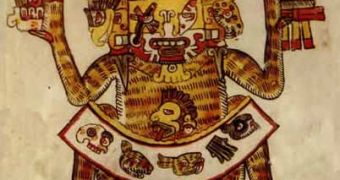They may not have watched TV and drunk beer in America 7,300 years ago, but they indulged on popcorn, as a new research at Florida State University revealed.
That's the approximate age when ancient Mexicans started to cultivate the base of their cuisine, 1,200 years earlier than previously believed.
The team lead by anthropologist Mary Pohl analyzed sediments in the Gulf Coast of Tabasco, Mexico (more precisely, phytoliths). "These are significant new findings that fill out knowledge of the patterns of early farming. It expands on research that demonstrates that maize spread quickly from its hearth of domestication in southwest Mexico to southeast Mexico and other tropical areas in the New World including Panama and South America", said Pohl.
"The shift from foraging to the cultivation of food was a significant change in lifestyle for these ancient people and laid the foundation for the later development of complex society and the rise of the Olmec civilization," she explained.
The Olmecs preceded the Maya culture by about a millennium and represent the oldest complex civilization in America, being the first to invent a writing system and leaving us the enigmatic huge stone heads with astronaut-like helmets. "Our study shows that these early maize cultivators located themselves on barrier islands between the sea and coastal lagoons, where they could continue to fish as well as grow crops," she said.
The first analyses, seven years ago, revealed 7,100 years old traces of primitive maize pollen and signs of forest clearing.
The current research investigated phytoliths (the silica structure in the plant cells) that pushed the age of the eldest maize 2 centuries earlier. Charcoal remains detected in the soil reveal that the ancient people employed fire to clear the fields for crops.
The phytolith analysis clearly showed that the cultivated plant was domesticated maize, not its wild ancestor, teosinte, something impossible to do, based on the fossil pollen analysis. "Primitive maize was probably domesticated from teosinte and transported to the Gulf Coast lowlands where it was cultivated," explained Pohl.
The new research comes against the old concept that Mesoamerican farming emerged in the Mexican semi-arid highlands of Mexico.
Pohl's team also signals that microfossils (like fossil pollen, starch grains or phytoliths) are less prone to contamination than macrofossils (like, in this case, maize cobs) so they offer more accurate information for dating.

 14 DAY TRIAL //
14 DAY TRIAL //